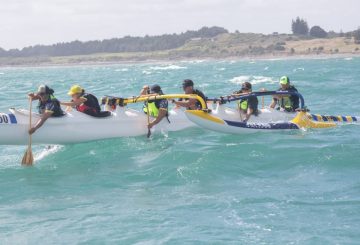Ang bilang ng mga may sapat na gulang sa Rotorua na namamatay nang maaga dahil sa mahinang kalidad ng hangin ay bumaba ng kalahati sa loob ng 13 taon, na nakakatipid ng higit sa $100 milyon sa mga gastos sa lipunan, ayon sa mga konsehal ng Rotorua Lakes.
Sa kabila ng pag-unlad na ito, binabalaan ng mga opisyal na ang mga bagong pamamaraan para sa pagsukat ng polusyon sa hangin ay maaaring makaapekto sa Rotorua, isang lungsod na nagtatrabaho upang mapahusay ang kalidad ng hangin nito. Councillor Lyall Thurston itinampok na Rotorua ay nagkaroon ng pinakamasamang kalidad ng hangin sa North Island, pangunahin dahil sa mga burner ng kahoy. Ginawa ang mga aksyon upang hikayatin ang mas malinis na mga pamamaraan ng pag-init, alisin ang ilang mga burner, at gumamit ng teknolohiya upang makilala ang mga hindi sumusunod sa mga patakaran.
Sinabi ni Dr Gregory Evans mula sa Toi Te Ora Public Health na ang polusyon sa hangin ay nakakaapekto sa lahat, ngunit ang ilang mga tao ay mas nanganganib. Ang panandaliang pagkakalantad ay maaaring magpalala ng mga kundisyon tulad ng hika, habang ang pangmatagalang pagkakalantad ay maaaring maging sanhi ng mga sakit Ang isang pag-aaral mula sa 2022 ay nagpakita na ang polusyon sa hangin na sanhi ng tao noong 2016 ay humantong sa 3300 maagang pagkamatay ng mga may sapat na gulang sa New Zealand. Sa Rotorua, ang mga pagkamatay na ito ay nabawasan mula 40 noong 2009 hanggang 19 noong 2022.
Ipinaliwanag ni Marion Henton mula sa konseho ng rehiyon ang paglilipat mula sa isang kusang-loob na diskarte sa 2008 sa isang mas mahigpit na diskarte ngayon, na nakatuon sa mga mapagkukunan ng mataas na polusyon. Ngayong taon, ang mga parusa ay ibinigay sa kauna-unahang pagkakataon sa mga gumagamit ng mga burner na hindi sumunod sa mga regulasyon.
Gayunpaman, itinampok ni Henton ang mga potensyal na hamon. Sinusuri ang pambansang pamantayan sa kalidad ng hangin. Ang mga iminungkahing pagbabago ay maaaring ilipat ang pokus mula sa PM10 hanggang PM2.5 particle. Dahil sa usok ng kahoy ay halos PM2.5, ang pagbabagong ito ay lubos na makakaapekto sa mga lungsod tulad ng Rotorua.
Binanggit din niya ang mga pagsisikap ng konseho na tulungan ang mga may-ari ng bahay na lumipat sa mga sumusunod na burner, na may maraming ibinigay na libreng kapalit. Plano ng konseho na ayusin ang mga target nito pagkatapos na matapos ang mga bagong pamantayan.





























































